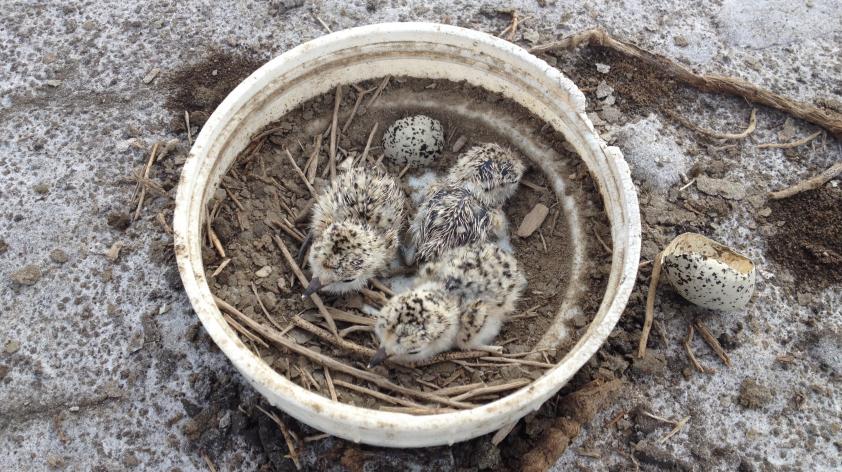
The Big Deal about Tiny Plastic
I stare at sand for a living. Okay, that’s not entirely accurate. But when you study the beach-nesting California Least Tern and Western Snowy Plover like I do, you spend a lot of time walking the beach staring at the ground, and most of that ground is sand.
When you stare at the sand that much, you begin to notice things. You begin to notice how much of what’s down there isn’t actually sand. Sure, there are pieces of beach plants, bits of shells, and other biological material that’s washed up.
However, there’s also a good deal of garbage.
Much of that garbage comes from single-use plastic. In the past year, our monitors at Marine Corps Base Camp Pendleton and Naval Base Coronado have filled over 20 garbage bags full of balloons alone while surveying our nesting sites.
As is evident by the multitude of volunteers that participate in beach clean-ups, many people are aware of the large debris that ends up in the ocean and washes up on our beaches.
However, what’s more insidious is what people don’t see and perhaps aren’t even aware of: microplastics.
What are microplastics? According to NOAA microplastics are “small plastic pieces less than five millimeters long which can be harmful to our ocean and aquatic life.”
An estimated 5 to 10 million metric tons of plastic waste is washed into the ocean every year and we’re not sure where it ends up. However, we do know that some of it ends up as microplastic, which can come from larger plastic items that have degraded. Since microplastics, by definition, are very small, concerns about what impact they may have on our environment and our health have only recently garnered much public attention.
Indeed, I performed my own informal poll of people who live in my house (sample size n=2). The results indicated that 50% of people surveyed had never heard of microplastics. This is especially concerning considering that 100% of those people are, or live in very close proximity to, an environmental scientist.
We’ve only been manufacturing plastics on a large scale within the last 50 years, so problems associated with single-use plastics have only entered the public consciousness relatively recently. While microplastics in the ocean may not necessarily pose known risks to human health, additional research is required before we can know for sure. What we do know is that microplastics are everywhere, and we’ve begun observing more and more evidence of negative impacts on birds and other ocean wildlife.
So hopefully now you’re asking: What can I do to reduce the amount of microplastic waste that’s all around us?
A great place to start is by minimizing your use of disposable plastic and reusing plastic items. This can cut down on the amount of plastic that could ultimately end up in our oceans. Participating in beach clean-ups and removing large plastic items can help minimize microplastic production. In addition, you can pass on your new-found plastic knowledge by educating others about the negative impacts of plastic.
For more information about microplastics, check out the Woods Hole Oceanographic Institution’s website, which has a lot of great resources about the research they’re doing on microplastics! National Geographic also has some additional information in their Planet or Plastic series.
You can support local beach clean-up events in your community. Visit the California Coastal Commission’s Cleanup Day website to learn more!













